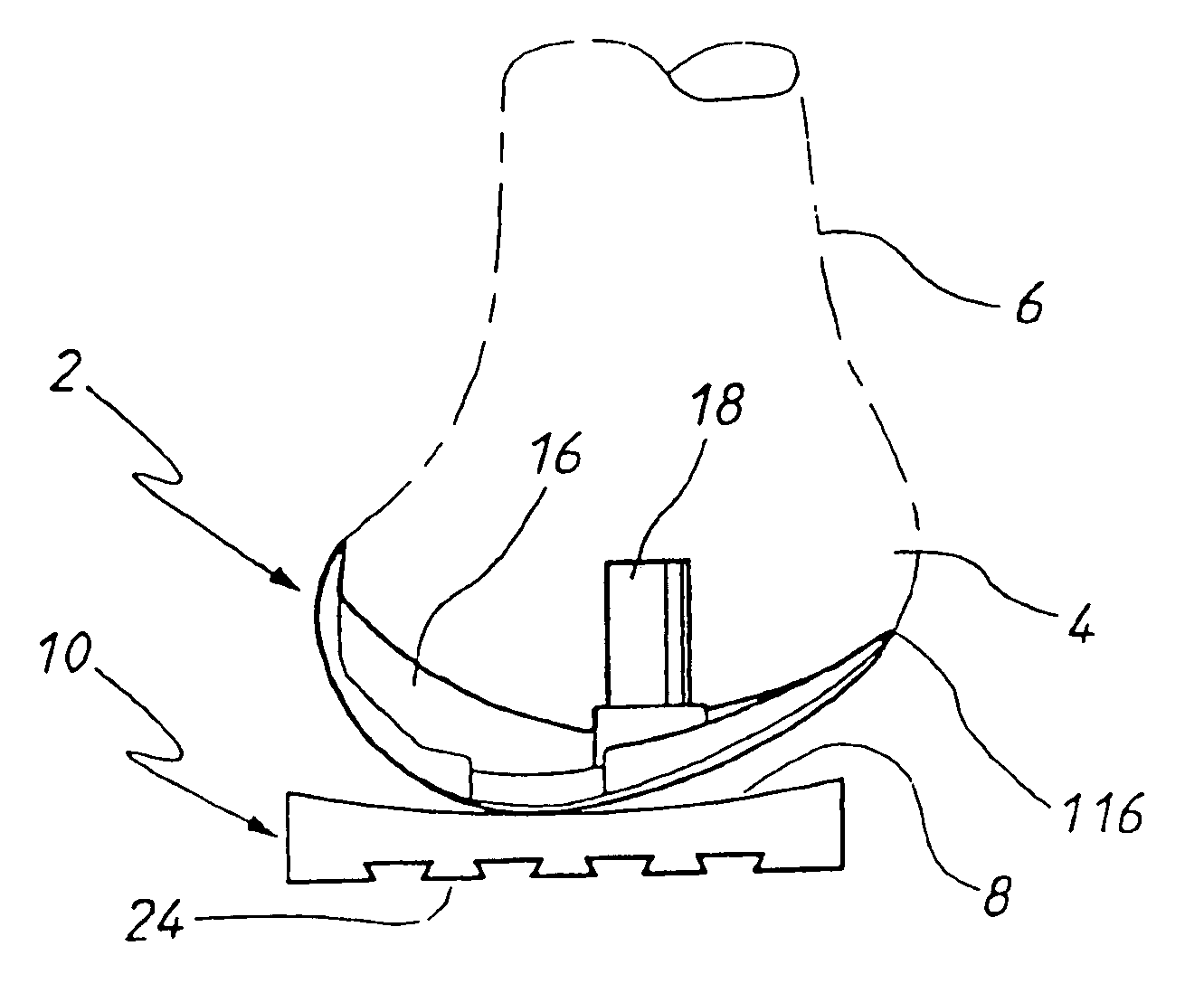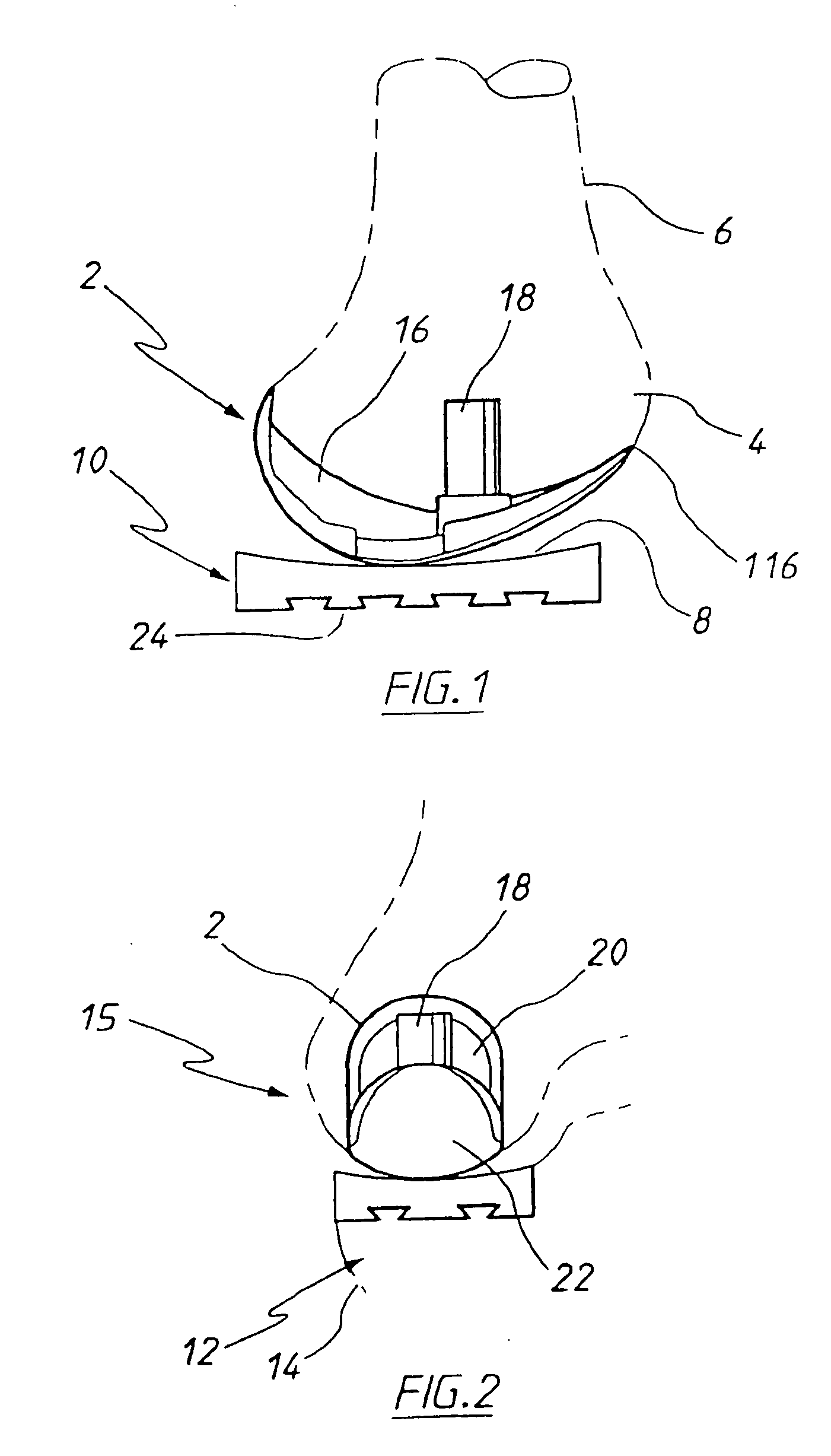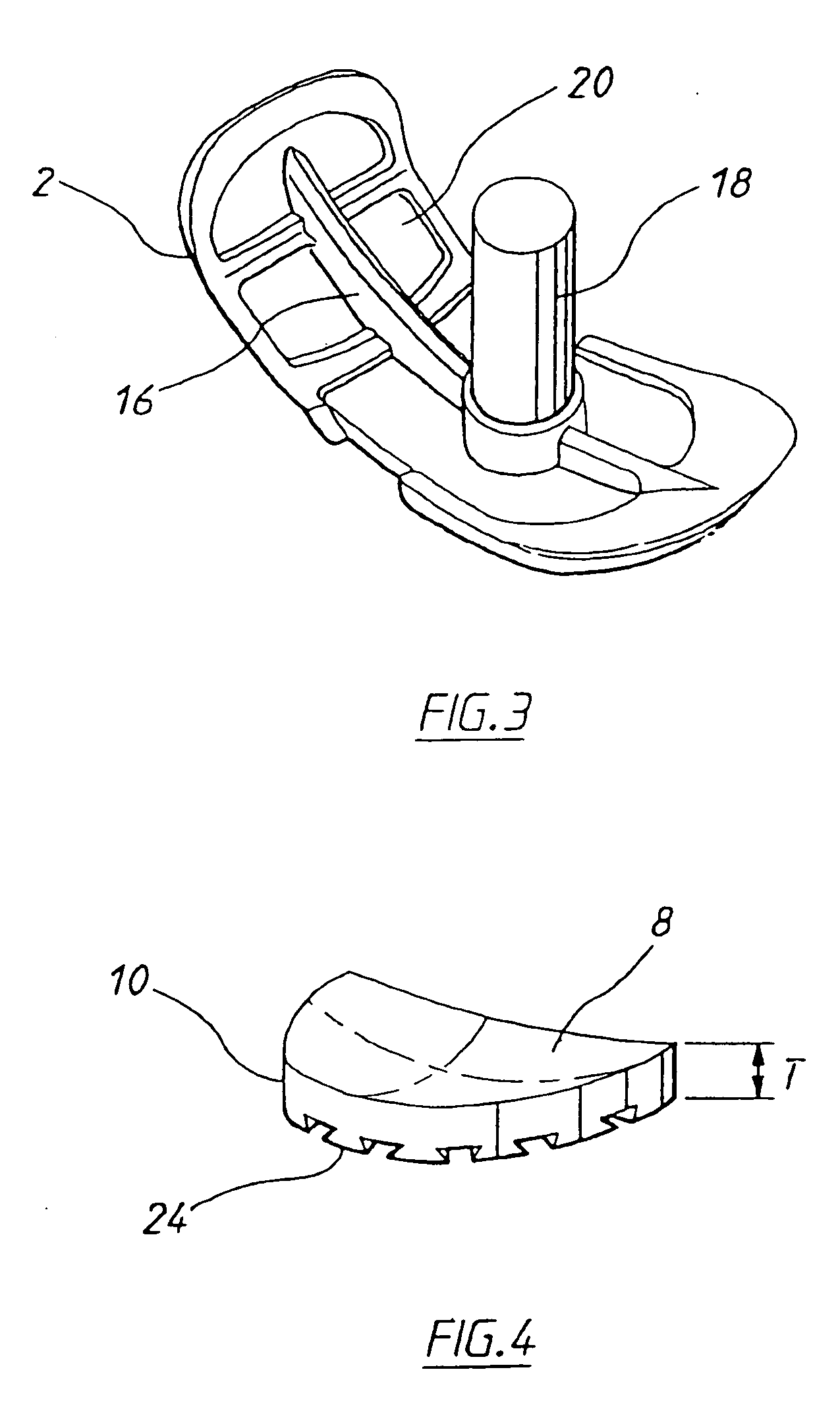Method of arthroplastly on a knee joint and apparatus for use in same
a knee joint and arthroplasty technology, applied in the field of knee joint arthroplasty, can solve the problems of increased risk of surgery related complications, increased operation time, and increased discomfort for patients
- Summary
- Abstract
- Description
- Claims
- Application Information
AI Technical Summary
Benefits of technology
Problems solved by technology
Method used
Image
Examples
Embodiment Construction
[0126] The femoral prosthesis 2 shown in FIG. 1 is fitted to the medial condyle 4 of the femur 6 and abuts articulating surface 8 of the tibial prosthesis 10 fitted on the corresponding medial condyle 12 of the tibia 14, for articulation thereon as the tibia undergoes flexion and extension about the knee joint 15. The positioning of the femoral prosthesis 2 and the tibial prosthesis 10 is more clearly shown in FIG. 2.
[0127] As shown in FIG. 3, the femoral prosthesis 2 is provided with a centrally orientated upstanding fin 16 incorporating a peg 18 projecting from an interior face 20 of the prosthesis.
[0128] The opposite outer face 22 has a curved contour for facilitating movement of the tibia about the femur. The interior face 20 of the femoral prosthesis is textured to enhance binding of bonding cement used to fix the prosthesis to the femur. The prosthesis itself is formed from a cast cobalt chromium molybdenum alloy conventionally used in the manufacture of such prostheses.
[01...
PUM
 Login to view more
Login to view more Abstract
Description
Claims
Application Information
 Login to view more
Login to view more - R&D Engineer
- R&D Manager
- IP Professional
- Industry Leading Data Capabilities
- Powerful AI technology
- Patent DNA Extraction
Browse by: Latest US Patents, China's latest patents, Technical Efficacy Thesaurus, Application Domain, Technology Topic.
© 2024 PatSnap. All rights reserved.Legal|Privacy policy|Modern Slavery Act Transparency Statement|Sitemap



